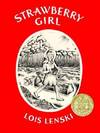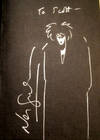
Memories of Men and Motor Cars
by Davis, Sydney Charles Houghton "Sammy
- Used
- Hardcover
- first
- Condition
- Good+/Good-
- Seller
-
Swampscott, Massachusetts, United States
Payment Methods Accepted
About This Item
S.C. H Davis (Sydney Charles Houghton "Sammy" Davis) (9 January 1887, London – 9 January 1981, Guildford) Memories of Men and Motor Cars, Published by Seeley Service & Co Ltd, London, 1965; 274pp, numerous b&w illustrations. Size: 8vo - over 7¾" - 9¾" tall. Edge tattering to the and small tears to edges of price-clipped dust wrapper, and with a personal inscription from Lenora to Peter B. Collins, London, Christmas 1965 (Peter Collins was a London Times Reporter and wrote for UNESCO in the 1960's about the ocean's warming); otherwise, a good tight copy of this hard-cover first edition book. Motoring memoirs by the author, better-known as Sammy Davis, from before WW1 up to the 1950s. He was sports editor of "The Autocar" magazine for many years and competed in motor racing in the 1920s and 30s. Davis was born in South Kensington, London on 9 January 1887, the son of Edwin and Georgina Davis, his father was a merchant and tea importer. He was educated at Westminster School and University College London. While at school, he met Malcolm Campbell, and the duo were involved in a "spectacular pile-up" with a borrowed penny-farthing bicycle. In 1906 Davis became an apprentice with the Daimler Company. Training as a draughtsman, he became involved with the design of various products, from the Daimler-Renard Road Train to Daimler's team of cars in the 1907 Kaiserpreis race. In 1910, he joined the staff of Automobile Engineer, just then being launched by Iliffe (also publishers of The Autocar) as a technical illustrator and was by 1912 also a writer and sub-editor. At the start of the First World War, he joined the Royal Naval Air Service and served in France with armored car section. Following his demobilization, he became sports editor of The Autocar although he also served in the Second World War in the Royal Electrical and Mechanical Engineers.
As sports editor, Davis aided his prewar motorcycling associate, W. O. Bentley, in starting his company. In 1921, Davis was invited by S. F. Edge to join Edge's Brooklands AC racing team, in between magazine deadlines, while in 1922 he was part of Aston Martin's effort to break no less than 32 world and class records at Weybridge. Davis became one of the famous Bentley Boys of the late 1920s. He won the 24 Hours of Le Mans outright in 1927. Partnered with Dr. Benjafield, they covered 1,472.527 miles at an average speed of 61.354 mph (98.740 km/h). Motor Sport reported: "The victory, in spite of its accident of the crippled 3-litre Bentley driven by J.D. Benjafield and S.C.H. Davis, will always remain an epic, and even if the competition was not as keen as in the past, it is great thing to have won a race with a car which was damaged in the early part of the event." In 1928 he finished ninth overall at Le Mans on a 1½-litre front-wheel-drive Alvis.
In 1925, Davis finished second at Le Mans with co-driver Jean Chassagne in a 3-litre twin cam Sunbeam, covering 1,343.2 mi (2,161.7 km),[7] some 45 mi (72 km) behind the winner.[8] Davis piloted a 3-litre Bentley at Le Mans in 1926, crashing in an attempt to take the lead only twenty minutes from the flag.[3] On 7 May 1927, Davis finished second in the Essex Car Club Six Hour race at Brooklands on an Alvis 12/50.[9] At Le Mans that year, Davis became the stuff of racing legend when, at the wheel of the 3-litre Bentley "Old Number Seven", he skidded into a pileup at White House and saw the chassis twist, but nevertheless went on to win.[3] Davis would enter the 1928 Le Mans, coming ninth at the wheel of a front wheel drive 1,500 cc (92 cu in) Alvis shared with Urquhart-Dykes.[3] He would also come second at the 1929 Saorstat Cup, Phoenix Park, and at the Brooklands Double-Twelve (24 hours in two shifts, because the track was prohibited from holding racing at night) and 500 mi (800 km). In 1929, Davis finished second overall, and class winner, in the Brooklands Double Twelve on a 4,398 c.c. Bentley. He finished second again in 1930 on a 5,597 c.c. Bentley. At Le Mans in 1930 he met with misfortune, when his goggles were shattered by a stone, forcing his retirement; there were concerns he might be blinded. On 4 October 1930, Davis was partnered with the Earl of March in an Austin Seven and they won the B.R.D.C. 500-mile race at Brooklands outright, at an average speed of 83.41 mph (134.24 km/h).] Also, at Brooklands that year, Davis set several Class H records in the Seven, including a flying kilometer of 89.08 mph (143.36 km/h). (For the kilometer, his co-driver was Charles Goodacre.) His efforts for the year earned him a BRDC Gold Star. He also entered a Daimler Double-Six sleeve-valve V12 at Monte Carlo. He had a spectacular accident in a low-chassis Invicta S-type at Brooklands in 1931, skidding into a telegraph pole. In 1933 he finished ninth at Le Mans in an Aston Martin. At the 1935 Tourist Trophy, Davis's Singer Nine crashed due to a broken steering ball joint. He hit Norman Black's Nine, which had crashed for the same reason at the same place. Despite the severity of the crash, Davis was unhurt. On 15 April 1937, Davis drove a Frazer-Nash BMW round Brooklands, covering more than 100 mi (160 km) in an hour, at an average speed of 102.22 mph (164.51 km/h) The same year, his Wolseley earned "a special award for being the best-equipped car to finish".
Davis also acquired an 1897 Léon Bollée Automobiles tricar, which he named Beelzebub, and continued to use into the 1960s before selling it to the Indianapolis Speedway Museum. In time, his interest in veteran cars led him to with another partner form the Veteran Car Club of Great Britain in 1930. He was first vice-president of the Aston Martin Owners Club in 1935, designing the Aston Martin "wings" badge. After the war, he did much to promote the revival of motorsport in Britain, both as vice-president of the Vintage Sports-Car Club and as President of the new 500 Club (later the British Racing and Sports Car Club). He was a committee member of the BRDC.] He also served on the Competitions Committee of the Royal Automobile Club, the governing body of motor sport in the United Kingdom. While in hospital after his 1931 Brooklands crash, Davis wrote Motor Racing.
Reviews
(Log in or Create an Account first!)
Details
- Bookseller
- Calix Books
(US)
- Bookseller's Inventory #
- Biblio 197
- Title
- Memories of Men and Motor Cars
- Author
- Davis, Sydney Charles Houghton "Sammy
- Illustrator
- Various
- Format/Binding
- Binding is tight. Dust cover frayed edges, tears, price clipped, inscribed to Peter B. Collins by Leonora, London, 1965
- Book Condition
- Used - Good+
- Jacket Condition
- Good-
- Quantity Available
- 1
- Edition
- First
- Binding
- Hardcover
- Publisher
- Seeley Service & Co Ltd,
- Place of Publication
- London
- Date Published
- 1965
- Pages
- 268, and index
- Size
- 8vo - over 7¾" - 9¾" tall.
- Weight
- 1.50 lbs
- Keywords
- Auto racing, history of automobiles, automobiles, race car drivers
- Bookseller catalogs
- Automotive;
Terms of Sale
Calix Books
30 day return guarantee, with full refund including original shipping costs for up to 30 days after delivery if an item arrives misdescribed or damaged.
About the Seller
Calix Books
About Calix Books
Glossary
Some terminology that may be used in this description includes:
- Tight
- Used to mean that the binding of a book has not been overly loosened by frequent use.
- First Edition
- In book collecting, the first edition is the earliest published form of a book. A book may have more than one first edition in...
- Edges
- The collective of the top, fore and bottom edges of the text block of the book, being that part of the edges of the pages of a...
- New
- A new book is a book previously not circulated to a buyer. Although a new book is typically free of any faults or defects, "new"...









